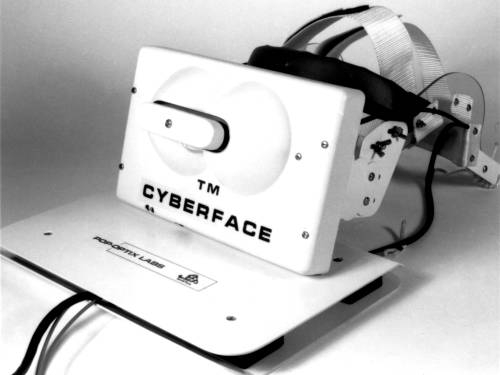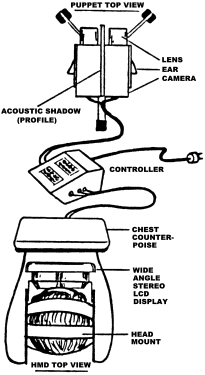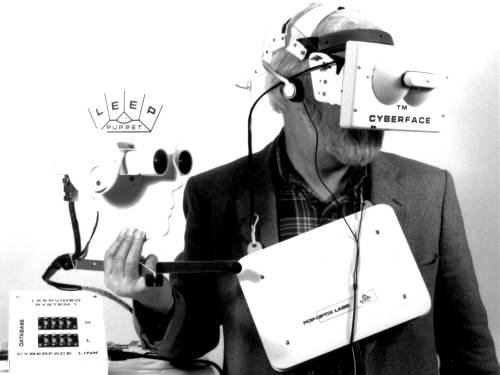The Original Cyberface and The LEEPvideo System 1
The First Commercial Head Mounted Display

Since 1985 NASA and VPL had been using the wide-angle LEEP viewing lenses in various head mounted display projects. Then, in 1988, NASA and a sensory research group at M.I.T. tasked Pop-Optix Labs with designing very wide-angle LEEP format lenses for video cameras. This work is what first made wide angle telepresence possible. With the release of the original LEEP Cyberface In March of 1989, Eric Howlett became the first to offer a commercial head-mounted display. The technology is essentially identical to that in the NASA "VIEWS" (Virtual Interface Environment Work Station). Like the NASA HMD, the Cyberface is monochromatic, but provides very wide angle stereo. This is a reasonable trade-off considering the technology that was available at the time the Cyberface was first created.
LEEPvideo System 1 Overview
As with the NASA VIEWS system, the Cyberface originally came packaged with a complete telepresence system. LEEPvideo System 1 was the first standalone telepresence Virtual Reality system to use the LEEP optics. The full system comprised:

Left: The system is shown as it might be tried out immediately after unpacking.
- The Cyberface head mounted display with counterpoise.
- The Puppet, a robot head with stereo cameras and binaural microphones.
- A controller/power supply box.
The Only True Orthospace System of its Time
Except for certain systems that had been put together by the workers at NASA Ames System Research Center over the years, LVS1 was the only LCD-based system that provided a head mounted display that rendered true orthospace. The Cyberface is still one of the widest angle systems ever made. LEEPvideo System 1 was produced in small batches, primarily for an assortment of applications and research in government and industrial laboratories. The LEEPvideo System 1 made it possible to explore the remarkable properties of wide-angle orthostereo with a nominal investment and without depending on any other facilities, being a plug-in, standalone system.
The Featherweight Chest Counterpoise

The most notable feature of the system, other than the fact that it was readily available on a commercial basis, is the novel method of mounting the display on the head. Note the large white "chest counterpoise," which serves as a terminus both for the main cable to the HMD, and for the distribution cables up to the left and right eyes, and as a highly damped counterweight to the display itself. The counterpoise can remove all of the two pound weight of the display from the face proper, transferring it to the soft nylon straps across the top of the head. We call it the Feathermount. By this means, the weight of the head mount is supported directly above the spine — a method that water carriers have shown for centuries to be very easy. The user can wear the Cyberface for hours without discomfort. The chest-mounted counterpoise also has the advantage that it does not add to the inertia of the the head mount, which, if it were a conventional counterweight located at the back of the head, would add uncomfortable twists during rapid turning movements. In this system when the head turns, the chest counterpoise simply rotates on the chest.
